How to Make Mashed Potatoes in Advance
How to make mashed potatoes in advance to re-heat and serve whenever you're ready.
Our casserole mashed potato recipe is kind of a game-changer, especially for frenzied Thanksgiving hosts. Those potatoes can be prepared several days in advance and then reheated, without tasting any worse for wear. It's a reminder that, contrary to popular belief, mashed potatoes can indeed be made in advance. In fact, there's more than one way to do it, and, with the holidays rapidly approaching, now is a good time to share a few of them.
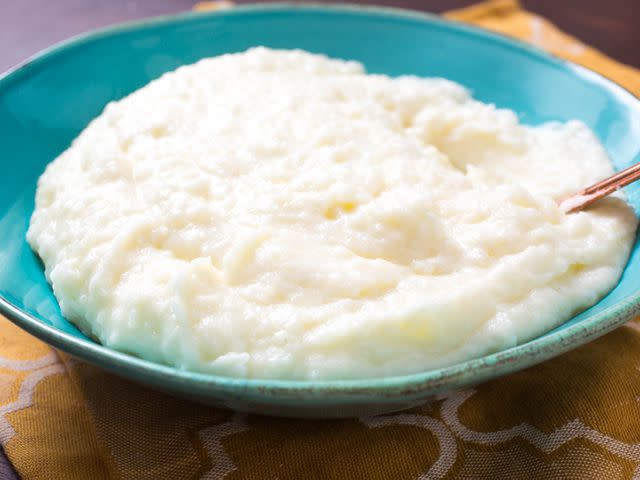
Serious Eats / Vicky Wasik
The Casserole

First up is the casserole. When I tested my recipe, I successfully refrigerated the potatoes for five days, and they still warmed up beautifully, as if they'd just been made.
The secret is to lock in moisture by adding a third ingredient to the classic combo of butter and cream. In my tests, I found that sour cream and cream cheese worked best. Sour cream creates the lightest, fluffiest potatoes, with a hint of tang that recalls the flavor of a sour cream–topped baked potato. Cream cheese, on the other hand, produces a mash that's slightly denser, with a milder flavor that really lets the potato shine through.

When you're ready to serve, all you have to do is heat your baking dish in the oven for about 45 minutes or so. A crispy topping adds some interesting texture and flavor, though you can also leave the potatoes as they are if you don't want a topping.
The only consideration here is that it requires some last-minute oven space. If that's a problem, the two make-ahead solutions below may be better options.
Read More: Crispy Mashed Potato Casserole With Bacon, Cheese, and Scallions Recipe
The Restaurant-Style Revive

One of the easiest make-ahead mashed potato methods I know comes from my restaurant days. As you can imagine, it's not really possible for a restaurant to prepare mashed potatoes from start to finish each time an order comes in. That would be silly. Instead, the mashed potatoes are prepped before service, then finished as needed. The key is to leave the cream out until the last minute, then heat it up and use it to bring the potatoes back to life.
Here's how to do it.
Start by preparing the potatoes following the method in my casserole recipe: Rinse the potatoes before and after boiling (a technique Kenji developed to remove starch on the cut surfaces), and dry the cooked potatoes in a hot oven to remove any moisture from excess water.
At this point, we diverge from the casserole. For this method, we mash the potatoes, either with a ricer, a potato masher, or a food mill, adding just butter and salt.
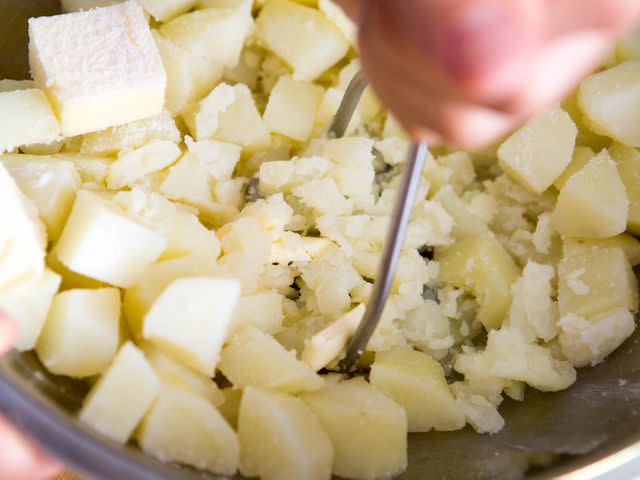
Serious Eats / Vicky Wasik
Put the potatoes in a container (a mixing bowl, quart container, or Tupperware container will work), and press plastic wrap against the surface to prevent a skin from forming. If you're making the potatoes only a couple of hours ahead, you can keep them warm. If you're making them a day in advance, you can put them in the fridge.
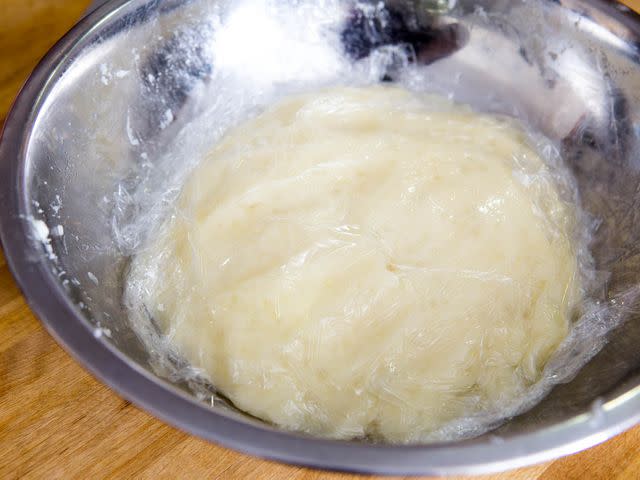
Serious Eats / Vicky Wasik
When you're ready to serve the potatoes, heat the cream (or milk or stock, as the case may be in your recipe) in a saucepan until it comes to a boil.

Serious Eats / Vicky Wasik
Add the premade mashed potatoes and fold them into the hot liquid. This will heat the potatoes quickly, while giving them their final texture.
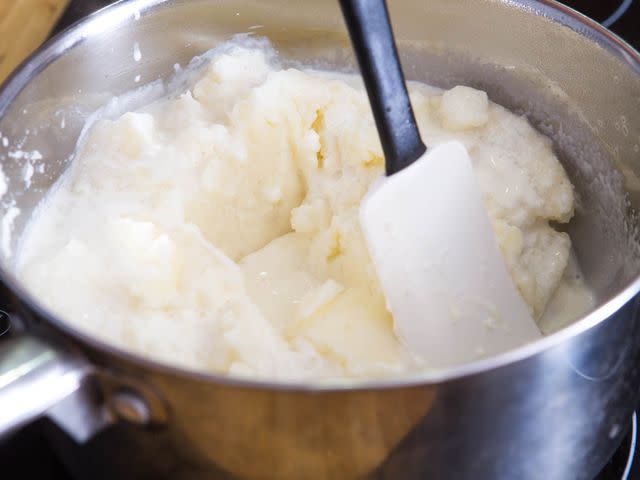
Serious Eats / Vicky Wasik
If the potatoes still aren't hot enough, just clear a space in the saucepan and add some more cream. Make sure it comes to a simmer before folding it into the potatoes—it heats much more efficiently before it gets folded in.
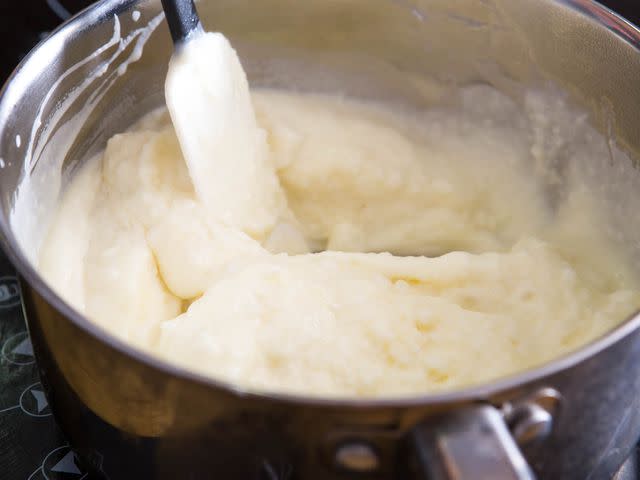
Serious Eats / Vicky Wasik
Sous Vide Mashed Potatoes
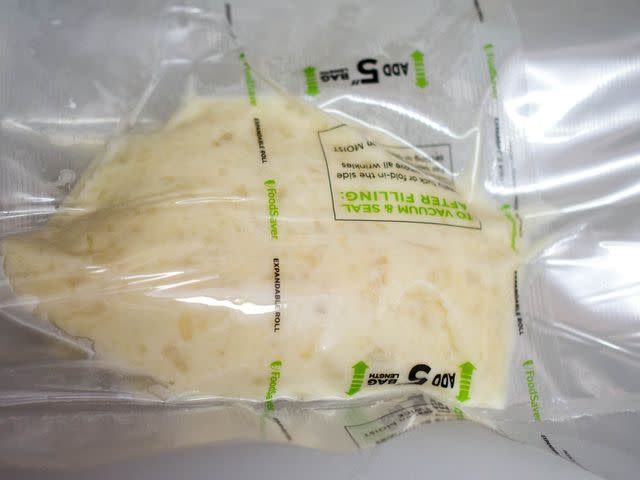
Serious Eats / Daniel Gritzer
The above two methods are great, but if you don't have any oven or stovetop space to spare, the best solution is to take those tools out of the equation entirely. Instead, seal your fully made mashed potatoes—cream and all—in a vacuum bag, and keep them warm using an immersion circulator until ready to serve. At this point, immersion circulators are affordable enough to make them a viable option for many home cooks.
In my tests, I found that the potatoes can be held at 150°F (66°C) for up to one day with no loss in quality. Even after 48 hours, they were still pretty darn good, though a stronger potato flavor, similar to that of instant mashed potatoes made from dried flakes, had started to develop, which I didn't love.
When you're ready to serve your potatoes, just snip the bag open and squeeze the potatoes out into their serving bowl. They'll be perfectly hot and ready to eat. Don't have a sous vide cooker? This method works just as well with a heavy-duty zipper-lock bag and a stockpot or beer cooler full of hot water. And it works perfectly with Kenji's mashed sweet potato recipe, too.
So now you know: No matter your kitchen setup or menu plan, there's a way to make mashed potatoes ahead without any last-minute scrambling.
More Potato Recipes
November 2014
Read the original article on Serious Eats.
